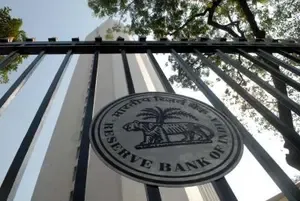RBI Lowers Repo Rate by 25 Basis Points, Adopts Accommodative Policy to Foster Growth

Synopsis
Key Takeaways
- Repo rate cut by 25 basis points
- Shift to accommodative policy stance
- Inflation concerns remain due to global risks
- GDP growth forecast revised to 6.5%
- Focus on liquidity in the banking system
Mumbai, April 9 (NationPress) RBI Governor Sanjay Malhotra declared on Wednesday a reduction of 25 basis points in the policy rate, adjusting it from 6.25 percent to 6 percent. This shift in the monetary policy stance from neutral to accommodative aims to stimulate economic growth.
The Governor mentioned that the Monetary Policy Committee (MPC) reached a unanimous decision to lower the repo rate, taking into account the prevailing macroeconomic and financial conditions as well as future outlook.
Malhotra explained that the MPC's shift to an accommodative stance will facilitate further easing of monetary policy through increased liquidity injections, thereby supporting heightened economic activity.
This change replaces the neutral stance, which neither stimulates nor restricts liquidity, he elaborated.
The RBI Governor also indicated that despite a decrease in inflation within the Indian economy, the central bank will remain cautious due to global risks, particularly those arising from increased US tariffs.
He assured that the RBI will maintain sufficient liquidity within the banking system.
With the repo rate reduction, the Standing Deposit Facility (SDF) rate will now be 5.75 percent, while the Marginal Standing Facility (MSF) rate and the bank rate will be adjusted to 6.25 percent, as stated by Malhotra.
This marks the second consecutive reduction of 25 basis points in the repo rate, following a previous cut in February, which was the first since May 2020.
A lowered policy rate typically results in reduced interest rates for bank loans, making borrowing more accessible for both consumers and businesses, which in turn fosters greater consumption and investment, ultimately driving economic growth.
However, the success of this rate cut will depend significantly on how rapidly and effectively commercial banks transfer the benefits to their borrowers.
Additionally, he announced a revision in the GDP growth forecast for the Indian economy, lowering it to 6.5 percent from the previous 6.7 percent.
This easing of monetary policy follows the finance minister's commitment to a fiscal consolidation path, which includes a reduction in the fiscal deficit target to 4.4 percent of GDP for 2025-26, down from 4.8 percent earlier, thus decreasing the government's need for market borrowing.
This adjustment provides the RBI with more flexibility to implement a soft monetary policy aimed at promoting growth.








